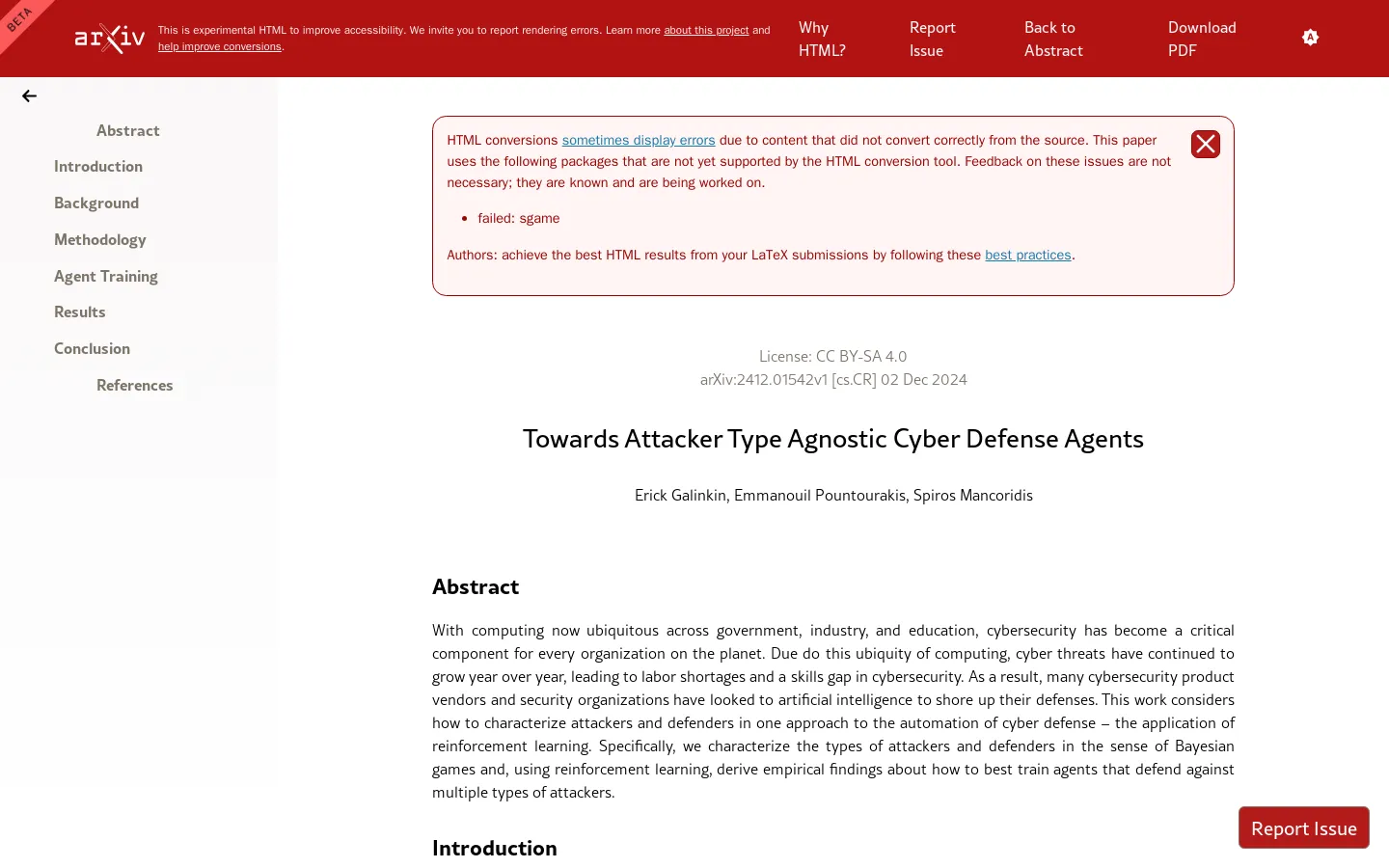
Advancements in Cyber Defense Using Reinforcement Learning
/ 4 min read
Quick take - Researchers are exploring the use of deep reinforcement learning to enhance automated cyber defense strategies, aiming to improve the recognition and response to various cyber threats through a multi-type training framework.
Fast Facts
- Researchers are utilizing deep reinforcement learning (DRL) to enhance automated cyber defense strategies, aiming to improve responses to various cyber threats.
- The initiative focuses on developing a multi-type training framework, extending the YAWNING-TITAN framework to enable agents to learn from multiple attacker types simultaneously.
- DRL represents a shift from traditional cybersecurity methods, allowing systems to learn from past experiences and adapt to new threats more effectively.
- The research promises to create more efficient cyber defense mechanisms, reducing response times and lowering breach risks for organizations.
- Key tools for implementation include the YAWNING-TITAN framework, Proximal Policy Optimization (PPO), and Security Orchestration, Automation, and Response (SOAR) frameworks, which enhance adaptability and incident response.
Advancements in Cyber Defense: Harnessing Reinforcement Learning
In a notable stride within the cybersecurity landscape, researchers are increasingly turning to reinforcement learning (RL), particularly deep reinforcement learning (DRL), to bolster automated cyber defense strategies. This innovative approach is poised to transform how organizations recognize and respond to a myriad of cyber threats, offering a more dynamic and adaptive defense mechanism.
The Role of Reinforcement Learning in Cybersecurity
The primary focus of this initiative is twofold. Firstly, it seeks to harness the potential of RL as a robust method for automating cyber defense mechanisms. By employing DRL, researchers aim to develop systems capable of autonomously responding to diverse cyber threats, thereby enhancing the security posture of organizations.
Secondly, the research emphasizes the development of a multi-type training framework. A significant part of this involves extending the existing YAWNING-TITAN reinforcement learning framework. The objective is to enable agents within this framework to learn and adapt to multiple attacker types concurrently. This capability is crucial for crafting more resilient defense strategies that can effectively counter the ever-evolving nature of cyber threats.
Implications and Potential Impact
The integration of DRL into cybersecurity marks a paradigm shift in organizational preparedness against cyber incidents. Traditional defense mechanisms often rely on static rules and signatures, which can be inadequate against sophisticated or novel attacks. In contrast, reinforcement learning allows systems to learn from past experiences, enhancing their ability to respond to new and unforeseen threats.
By advancing the YAWNING-TITAN framework to support multi-type training, this research promises heightened adaptability in cyber defense systems. Agents trained under this framework will not only recognize specific attack types but also adjust their strategies as new threats emerge. This adaptability is vital in the fast-paced world of cybersecurity, where attackers continuously evolve their tactics to exploit vulnerabilities.
The implications are profound: organizations can anticipate more effective and efficient cyber defense mechanisms that reduce response times and lower breach risks. Furthermore, developing a multi-type training framework could establish a new standard in cybersecurity training protocols, encouraging broader adoption of AI-driven security solutions.
Essential Steps for Implementation
For practitioners looking to implement these advancements, several key steps are outlined:
-
Preparation and Planning: Gather all necessary materials and clearly outline objectives before commencing any project. This ensures a streamlined process focused on achieving end goals.
-
Execution of Techniques: Implement the discussed techniques with careful attention to detail and adherence to specified methods for optimal results.
-
Review and Adjustment: Critically review initial executions, assessing successes and areas for improvement, allowing for necessary adjustments.
-
Final Touches and Presentation: Add finishing touches and prepare the project for presentation, ensuring everything is polished for stakeholders.
Best Practices and Common Pitfalls
To maximize efficiency in using reinforcement learning for cybersecurity, practitioners should:
- Establish a clear understanding of specific cyber threats faced by their organization.
- Incorporate diverse training data sets to improve model performance.
- Continuously monitor and update models due to evolving cyber threats.
- Foster collaboration between cybersecurity experts and data scientists.
- Prioritize transparency in models for stakeholder trust.
Awareness of common pitfalls is also crucial:
-
Overfitting: Avoid models overfitting to specific datasets by incorporating diverse data and regular updates.
-
Reward Structure Misalignment: Ensure reward structures align with real-world objectives to prevent suboptimal behavior.
-
Resource Requirements: Be mindful of computational demands; evaluate infrastructure capabilities for ongoing model training.
Recommended Tools and Resources
Several tools are recommended for enhancing cybersecurity through reinforcement learning:
-
YAWNING-TITAN Framework: Optimizes security measures by learning from past incidents.
-
Proximal Policy Optimization (PPO): Effective for training agents in complex environments.
-
Hierarchical PPO (HiPPO): Introduces hierarchical decision-making processes for nuanced security responses.
-
Security Orchestration, Automation, and Response (SOAR) Frameworks: Integrates security tools for improved threat detection through automation.
By leveraging these resources, organizations can significantly enhance their cybersecurity posture, making it more resilient against evolving threats and vulnerabilities. As this research progresses, it may pave the way for a new era of automated, intelligent cybersecurity systems capable of keeping pace with the dynamic landscape of cyber threats.



